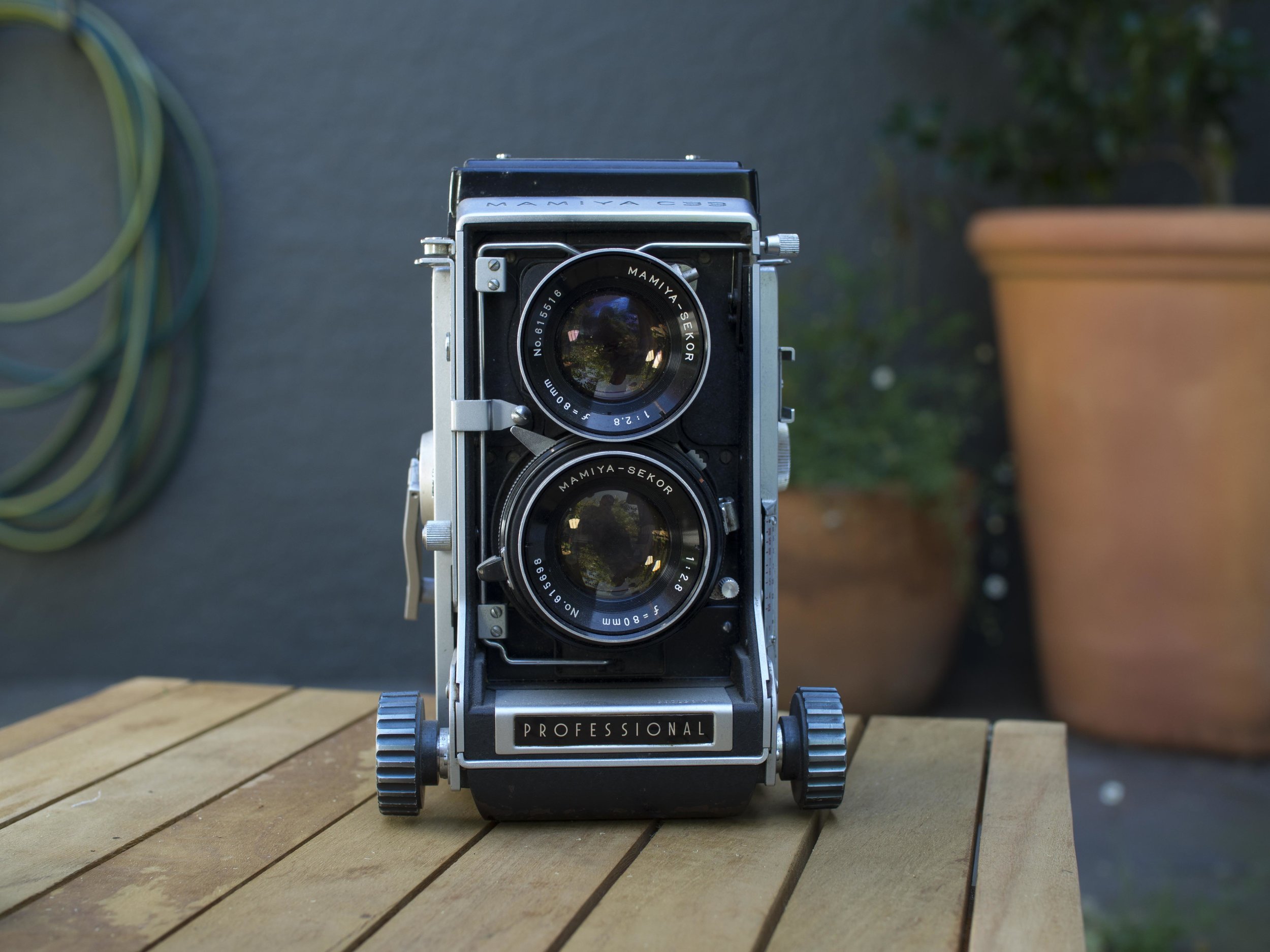There is still a lot of confusion out there about Bokeh.
What is it (really), how does it effect our photography, how or why do you apply it and where do you find it?
First up, what is it?
Bokeh (Bo as in bone - keh as in kettle) is an umbrella term coined by Mike Johnson of Camera and Creative Darkroom Techniques magazine in the ‘90’s (still very active as The Online Photographer blog) and John Kennerdell, a then resident of Japan who broached the subject with Mike after noticing it mentioned in several Japanese lens reviews.
This lead to a full magazine edition (no small thing) dedicated to the subject (May/June ‘97 edition of “Darkroom and Creative Camera Techniques”- see Books and Bags for a full run-down). Mike Johnson created the name using the term the Japanese use Boke, changing it to Bokeh to help westerners with pronunciation-not that it helps often (Apple, looking at you). It refers to the “quality or flavour of the out of focus elements of an image”, used by the Japanese in painting. As with many words or terms, it can take on other meanings such as being “fuzzy headed”.
It is especially useful to have a name for this as there is an element of out of focus or transitional focus in almost every camera made image.
Almost no photography (flat object copy work and astro photography excepted) is entirely and equally in focus at all points of the frame, so some, much or most of any image taken with a photographic tool is going to to be either slightly or more, out of focus. This is called depth of field, referring to the inevitable reality that if a single plane is in focus, every other plane is more or less out of focus. The character of this transition varies greatly in form and personal preference, but regardless, it all comes under the general term of Bokeh.
Where it has gone wrong in recent times is in interpretation. Bokeh has become a term used almost exclusively to describe super shallow depth of field and the simple optical phenomenon called “Bokeh balls”, but that is like mixing up flavour intensity with flavour type. Shallow DOF is simply a reality of physics. Longer lenses, wider apertures, higher magnification, relative distance to the background, all contribute to the effects of DOF.
A Bokeh cheap shot. A low end lens, used with deliberate out of focus induced Bokeh against a wall of ball shaped lights. The quality of the Bokeh is poor (blotchy and irregularly shaped), but the quantity is high.
The term Bokeh refers to the quality of blur, not the quantity.
Many photographers have been responding to Bokeh or the different rendering their lenses create since photography became main stream, often proudly stating that an image was made with lens “X” rather than “Y” based on a “feeling'“ or sharpness rendering of the favoured lens, but this was more from an awareness of individual lens character, not a defined measure. They were often responding to the Bokeh, but without having a recognised term to describe it substituted terms like “swirly” or “rough”.
The difference in Japan is there is a defined set of terminologies that can be and are used regularly and seamlessly. “Ni-Sen” for example referred to “cross-eyed” or double lined Bokeh. The problem for us stems from the lack of an over-arching term to describe all of these individual types of blurring in a way western users could understand. The term Bokeh unfortunately describes the phenomenon, not the individual set types within it, but has become the one term we use to describe…what exactly.
What effect does it have?
The reality is, we respond to it whether we are aware of it or not.
Have you ever used a lens that makes images that just look right, especially when there is a lot of out of focus information in the composition? Maybe another that, for some reason you dislike on a fundamental level, but you are not sure why? Chances are this is Bokeh at work. I purchased the Olympus 12-100 F4, fully aware that I disliked it’s Bokeh rendering, but intended to use it exclusively for deep depth of field landscape work, where it’s superior sharpness and versatility would shine. The 12-40 is much preferred when some background blurring is likely.
A personal favourite, the Olympus 45mm f1.8. The Bokeh is not measurable “perfect” and the lens sometimes even suffers mediocre reviews for it’s Bokeh, but that does not change the fact that I respond positively to many images, especially focus near misses, that would otherwise be binned.
The right and wrong of it are very subjective. One person’s need for silky smooth, even blobby” backgrounds is at odds with a another person’s “story telling” long transition rendering.
This image has the main subject (the facing woman) out of focus (f1.8 used in very low light). The rendering of the lens (Olympus 17mm f1.8) allows, regularly, for these mistakes to be tolerated as it’s transition is long and proportionate. A different lens (Panasonic 20mm f1.7 for example) would show a more modern fast transition to blur, making the man’s back the only fully in focus element, therefore making the image a useless miss. Notice the old woman in the back of the image is still fairly clearly defined.
In the past, mainly due to technical realities of slow films on larger format cameras (both contributing to shallow depth of field as a constant reality), lenses were designed to show deep and graceful transition. As cameras got smaller and film faster, tastes changed. Shallow depth became a creative tool rather than an avoided curse and our preferences for Bokeh changed also.
Pleasantly non-intrusive Bokeh, from and back. The 12-40 is a favourite when smooth blur at the expense of detail retention is desired.
The two images above were both taken with different 25mm lenses at the same distance with the same f2.8 aperture and the same camera (the slight magnification difference is down to the modern lens being actually slightly wider than marked). The thing to look at here is the rendering of the hose, pot and flowers in the background.
The left image was taken with an old Olympus Pen lens from the 60’s, where the extra (micro) contrast and complication of the image would have possibly been seen as a benefit. The right hand image was taken with the newer Olympus 25mm f1.8, a lens that shows lots the modern trend for the fast and smooth transition favoured by many. The actual sharpness of the two lenses is similar.
Taken with the unusually good at Bokeh Olympus 75-300 zoom. This lens has good enough sharpness at 300mm wide open to be used regularly, but it’s ability to compress and good Bokeh (when it is possible) strengthens the effect of sharpness.
You can ignore Bokeh, but you cannot escape it. Some photographers, such as landscape specialists have less need to worry about the Bokeh of their lenses, as they tend to shoot with maximum DOF, but many other forms of photography, such as portraiture play in this area constantly.
Next time you are responding positively or not to an image, consider the Bokeh as well as other compositional elements. It may be the core of an emotional response rather than a purely technical one.






